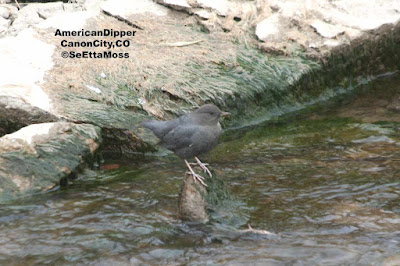A real water bird

American Dippers spend their lives in and around water. They feed almost entirely on aquatic insects and "occasionally other invertebrates, small fish, fish eggs, and flying insects" according to "Birds Of North America" online. This dipper has been in and near the Arkansas River on my friend' place just east of Canon City, a location where 1-2 dippers have wintered the past several years. Last week this dipper flew towards me as it chased another dipper, likely in a territorial dispute. As it chased the other dipper, it sang some of a melodic tune then launched into it's rattle-call (similar though higher pitched than the rattle of Belted Kingfishers) Double-click on the pic for a closer view. SeEtta

